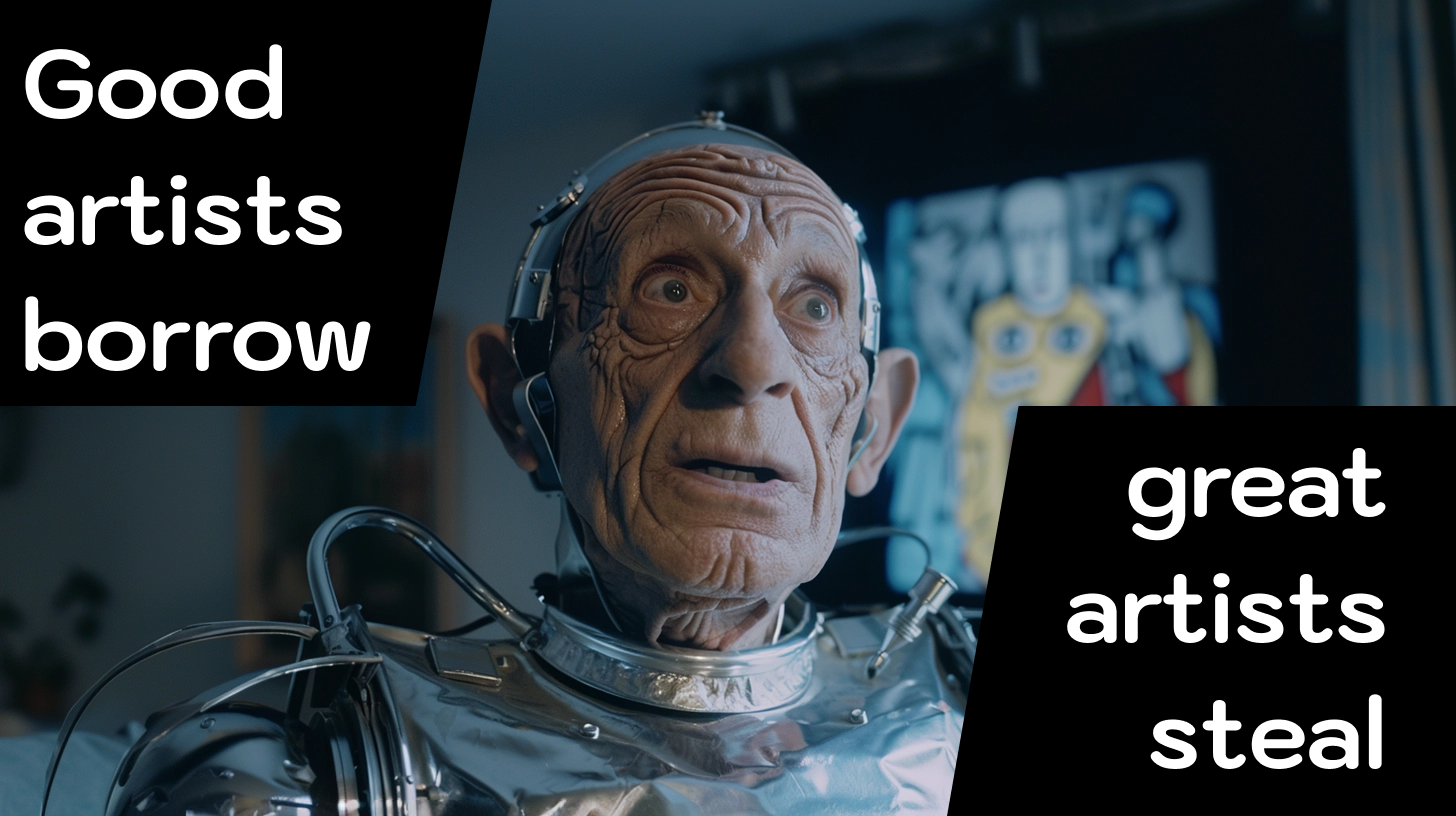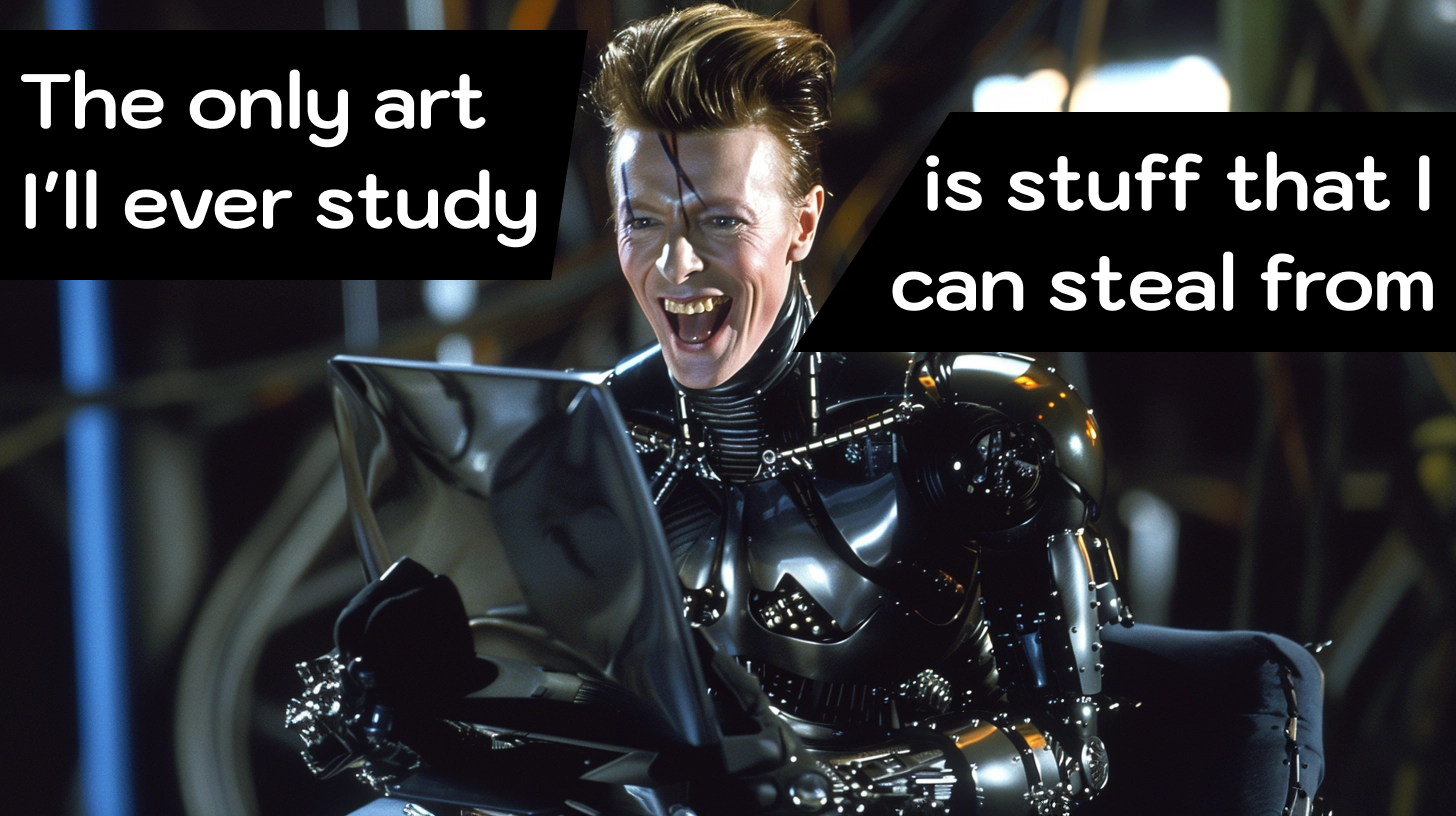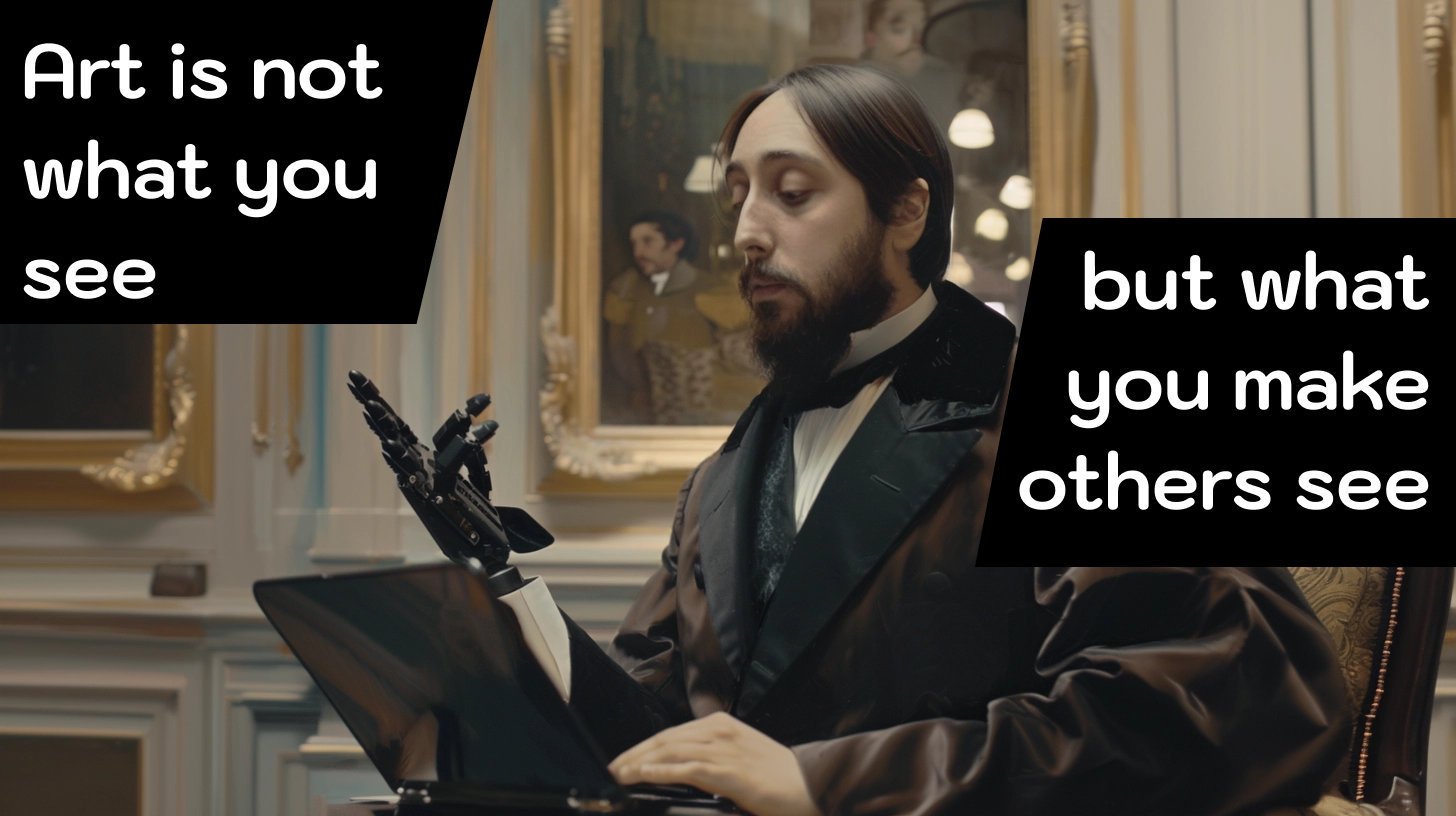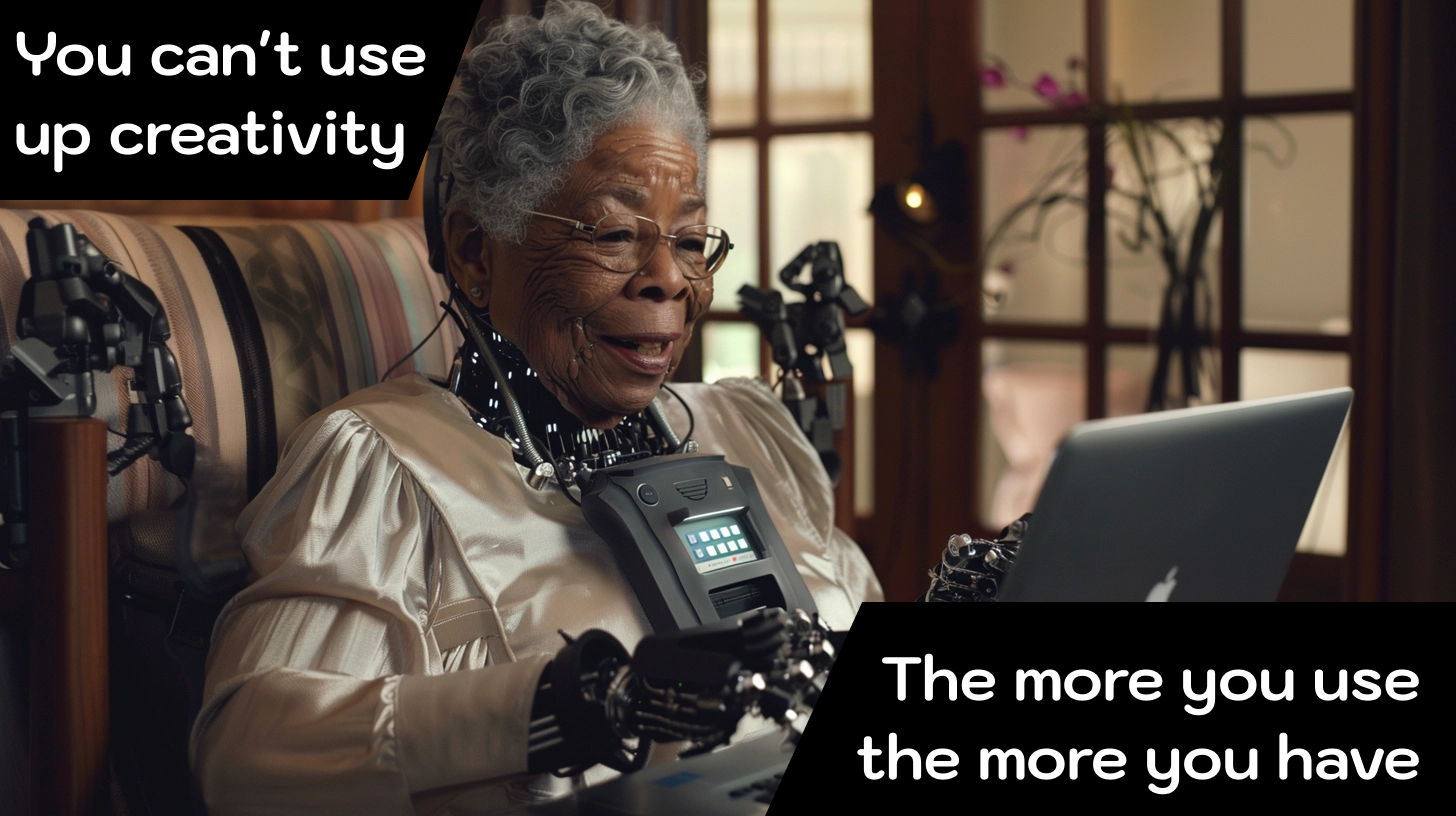Picasso said, ‘Great artists steal.’ AI took this idea and turned it into a cultural revolution.

AI Art is trained on vast datasets of existing images. These images are transformed into numerical representations by machine learning. From this, AI generates new pieces of art, influenced by all imagery it’s been trained on, but filtered to the words provided in a prompt.
This dataset likely emerged from images online. We don’t know for sure what has gone into train the machine, but try typing in “film still, THE AVENGERS (2012)” into midjourney to see it’s power at pixels in a very familiar style.
Many are unsettled by this dataset, labelling it theft.
A Tale as Old as Time
But this is precisely how human artists created art before ever existed.
Through a process called “inspiration” artists would absorb everything they saw, from a beautiful landscape or a crudely scrawled graffiti in a toilet cubicle through their optical nerve. This would then be processed by the posterior parietal cortex and eventually represented in the fronto-parietal network, available to be called on whenever inspiration was required.
It is true that AI Artists often find themselves becoming more aware of art styles, artists and aesthetics as they progress as an AI artist.

“The only art I’ll ever study is stuff that I can steal from.” - David Bowie
The Desire to be Seen
The datasets powering many art services consist of seemingly stolen imagery. This is because in the early days of the internet people put some simple commands on their websites.
ʀᴏʙᴏᴛꜱ.ᴛxᴛ
ᴜꜱᴇʀ-ᴀɢᴇɴᴛ: *
ᴀʟʟᴏᴡ: /
This simple command invited search engines like Google to crawl their sites and allow them to be seen in search engine results.
Unwittingly they were asking for their work to be crawled by robots.
These robots fed the datasets.
These datasets were used to train AI.
The Irony of AI Artists
Yet, on 𝕏 I often see AI artists often complain about their work being remixed. They lament over their prompts being ‘stolen.’ The irony is thick.
This is because people yearn to be the great discoverer. The original. The creator.
But these people miss the point.

“Art is not what you see, but what you make others see.” - Edgar Degas
The true purpose of AI Art is to continue the discourse of creativity. To inspire others and help them remix your work as they make sense of the world.
You have a choice when you see art you create being stolen.
You can be frustrated - which leads to resentment and pain.
You can be inspired - which leads to new ideas and understanding.
Art has always thrived on influence. AI’s approach is merely more instant.
To those who are feeling frustrated from stolen work, I offer Maya Angelou’s wisdom:

“You can’t use up creativity. The more you use, the more you have.”
Conclusion: The Future is Borrowed:
AI art intertwines the influence of the many into something personal and new. As we embrace this digital renaissance, let’s share ideas freely.
After all, creativity should never be taken too seriously.